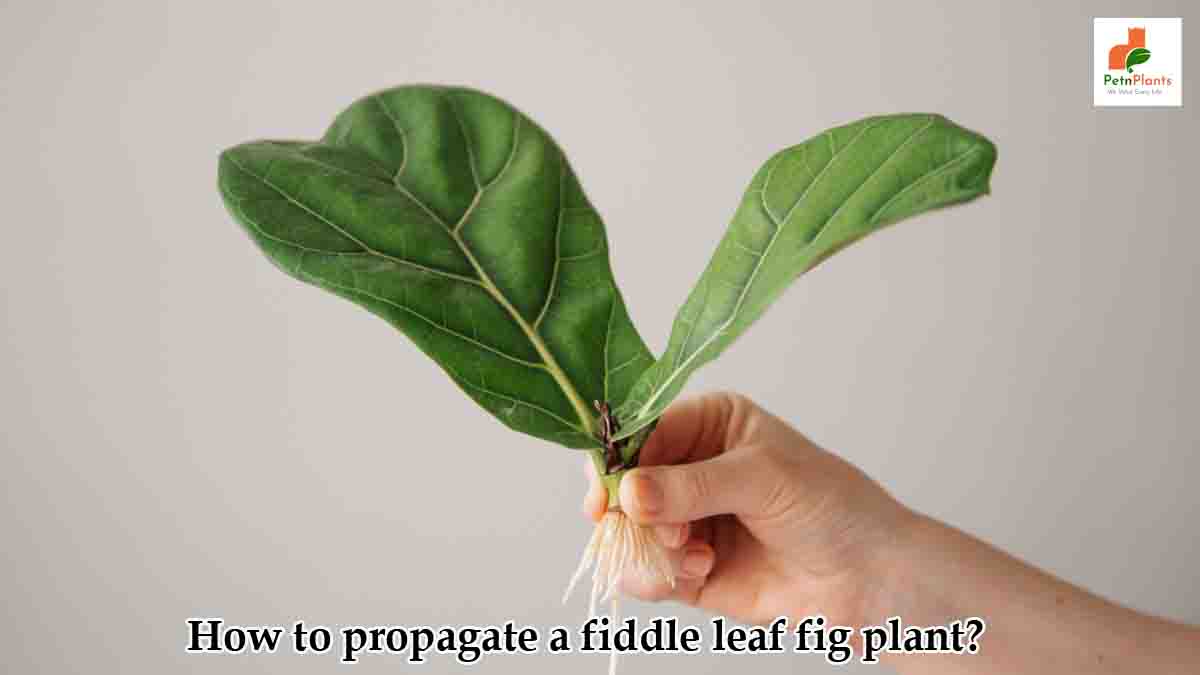How To
Latest
Pet Care
How to Groom Your Dog at Home with the Right Dog Grooming KitMarch 19, 2025
We Value Every Life

If you’re looking for a lush and vibrant houseplant, look no further than the beloved fiddle leaf fig. With its large, glossy leaves and upright growth habit, it’s certainly a conversation starter. But did you know you can propagate your fiddle leaf fig plants from one plant? That’s right! If you want to increase your collection of fiddles (or even just have some backup in case one dies), this article is for you. In this blog post, we will explore how to propagate a fiddle leaf fig plant step-by-step so that you can enjoy the beauty of these unique plants in your home.
A fiddle-leaf fig plant is a type of fig tree native to subtropical and tropical regions of the world. The fiddle leaf fig leaves are large and leathery and have a distinctive shape resembling a violin or fiddle. The plant is also known for tolerating low light conditions and drought.
Fiddle leaf figs are relatively easy to propagate from stem cuttings, and doing so can produce a full, bushy plant relatively quickly. Although fiddle leaf figs can be propagated from seed, it is much more difficult and time-consuming than propagating from stem cuttings. Additionally, fiddle leaf figs propagated from seed often do not have the same lush foliage as those propagated from stem cuttings.
If you’re reading this, chances are you’re the proud owner of a fiddle leaf fig plant. Congrats! These beautiful plants are notoriously difficult to keep alive, but we’re here to help you every step of the way. Today we’re going to talk about how to propagate your fiddle leaf fig plant.
Don’t worry; propagating a fiddle leaf fig is not as difficult as it may seem. With a little bit of patience and the following instructions, you’ll be a pro in no time!
First things first, you’ll need to gather some supplies. For this project, you will need the following:
Now that you have all your supplies, it’s time to start! Start by carefully removing your fiddle leaf fig plant from its current pot. Gently loosen the roots and shake off any excess dirt. Once your plant is free from its pot, closely examine the roots and trunk. You will make your cut just above a node on the trunk (this is where new leaves grow). Using your
The best time to propagate a fiddle leaf fig plant is in the spring or summer. The plant will need about 6-8 weeks to develop a good root system.
If you want to propagate a fiddle leaf fig plant, there are a few things you need to do. First, you need to find a stem with at least two leaves. Cut the stem about six inches below the lowest leaf. Next, remove the bottom leaves so that only the top two leaves are left on the stem. Dip the cut end of the stem in rooting hormone and then place it in a pot with moistened potting mix. Cover the pot with plastic wrap and place it in a warm location. Keep the soil moist but not wet, and roots will form in about six to eight weeks, and new growth will appear.
Propagating a fiddle leaf fig plant is a great way to increase your collection of plants without having to spend money. With the right tools and knowledge of how to do it safely, anyone can successfully propagate their plants at home. Whether you’re a budding green thumb or an experienced gardener, this article has hopefully provided some useful information on how to propagate your fiddle leaf figs. Have fun getting creative with your propagation projects!
Pet N Plants, a passionate group of authors who are devoted pet and nature enthusiasts. With over 15 years of experience in pet and plant care, our authors bring a wealth of knowledge and a deep love for all things flora and fauna. Each member of our team is dedicated to sharing insightful tips, detailed care guides, and the latest trends to help you nurture your beloved pets and plants. Whether you're a seasoned gardener or a pet parent, our experts are here to support your journey in creating a thriving, vibrant home environment for all your living companions.
0